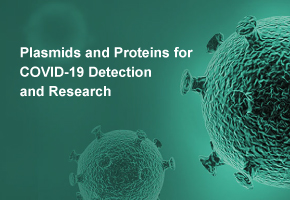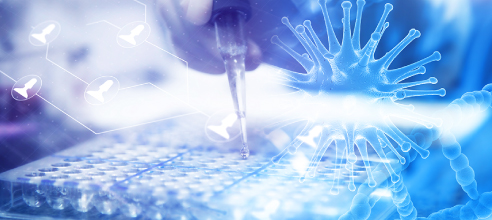A Guide on RNP System for CRISPR Editing (1)
Using CRISPR ribonucleoprotein (RNP) system for genome editing has many advantages over the traditional CRISPR plasmid method, including improved transfection efficiency in hard-to-transfect cells and reduced off-target effects. Firstly, you need to know How to prepare RNA oligos and RNP complex before using CRISPR ribonucleoprotein (RNP) system for genome editing.
Step 1: Prepare RNA Oligos
Note: Keep the RNA oligonucleotides tightly sealed at -20°C prior to use and avoid repeated freeze-thaw cycles. We recommend working in a sterile environment, using RNase-free pipette tips and tubes.
1.
Centrifuge
tubes at 12000rpm for 2 minutes at 4°C before opening to ensure RNA
oligos are at the bottom of the tubes.
2. Resuspend oligos in nuclease-free water to reach the appropriate final concentration, for example, 100µM.
3.
Vortex
for 15 seconds and centrifuge for 1 minute at 12000rpm.
4.
Prepare
the following reagents:
Ø If
working with sgRNA system:
To anneal components of 25μM final sgRNA concentration:
Ø If
working with crRNA and tracrRNA system:
To anneal components of 25μM final duplex concentration:
5.
Heat
at 95°C for 5 minutes.
6.
Remove
from heat and put in 60°C water, and let it to cool to room temperature.
7. If necessary, divide the annealed sample into smaller aliquots. Store at –20°C.
Step 2: Prepare RNP Complex
Note: Keep the Cas9 vial sealed until use and avoid repeated freeze-thaw cycles, as either may reduce the activity of Cas9 protein.
TIP Prior to use, you can dilute the Cas9 protein solution using a diluent buffer (10mM Tris, 300mM NaCl, 0.1mM EDTA,1mM DTT, 50% Glycerol to pH7.4 at 25℃) for easier quantification of the protein.
For different cell lines, different transfection reagents or methods should be used for best genome editing results. Typically, Lipofectamine™ CRISPRMAX or electroporation is recommended for transfection in easy-to-transfection cell lines. For hard-to-transfect cell lines, electroporation can be a good choice. Please check what is the most appropriate transfection reagent or method for your specific cell line, and follow the recommended protocol for it, if other than Lipofectamine™ CRISPRMAX™.
Ø The
following protocol is recommended for Lipofectamine™ CRISPRMAX™.
1. Prepare the following reagents based on your needs:
2.
Gently
add solution A to solution B.
3. Incubate the tube at room temperature for 10 minutes.
How to test RNP efficacy in cells, through either cationic lipid-mediated transfection or electroporation? How to test RNP efficacy in embryos? How to test RNP in vitro cutting efficiency? You can find more information about CRISPR ribonucleoprotein (RNP) system here or A Guide on RNP System for CRISPR Editing (2).
CRISPRRibonucleoprotein (RNP) User Manual
A guide on how to use CRISPR RNP for targeted genome editing.
Related articles
Top Genome Editing Breakthroughs in 2020
Glycosylase base editors enable C-to-A and C-to-G base changes
How to Select CRISPR/Cas9 Expression System?
Rapid Multicopy Chromosomal Integration Renovates the Way Cell Factories are Built
- Like (2)
- Reply
-
Share
About Us · User Accounts and Benefits · Privacy Policy · Management Center · FAQs
© 2025 MolecularCloud




